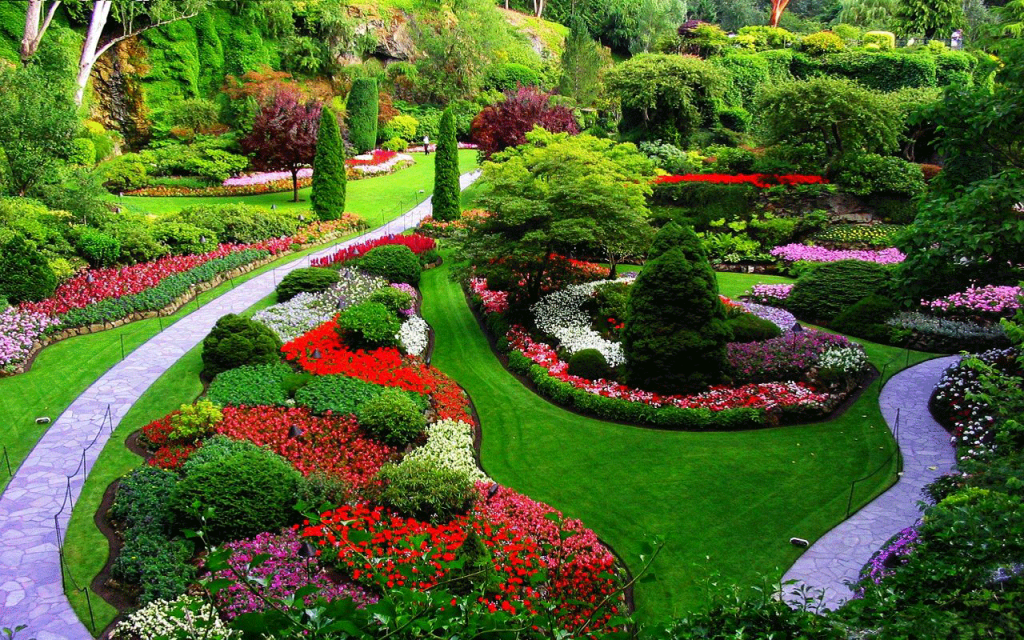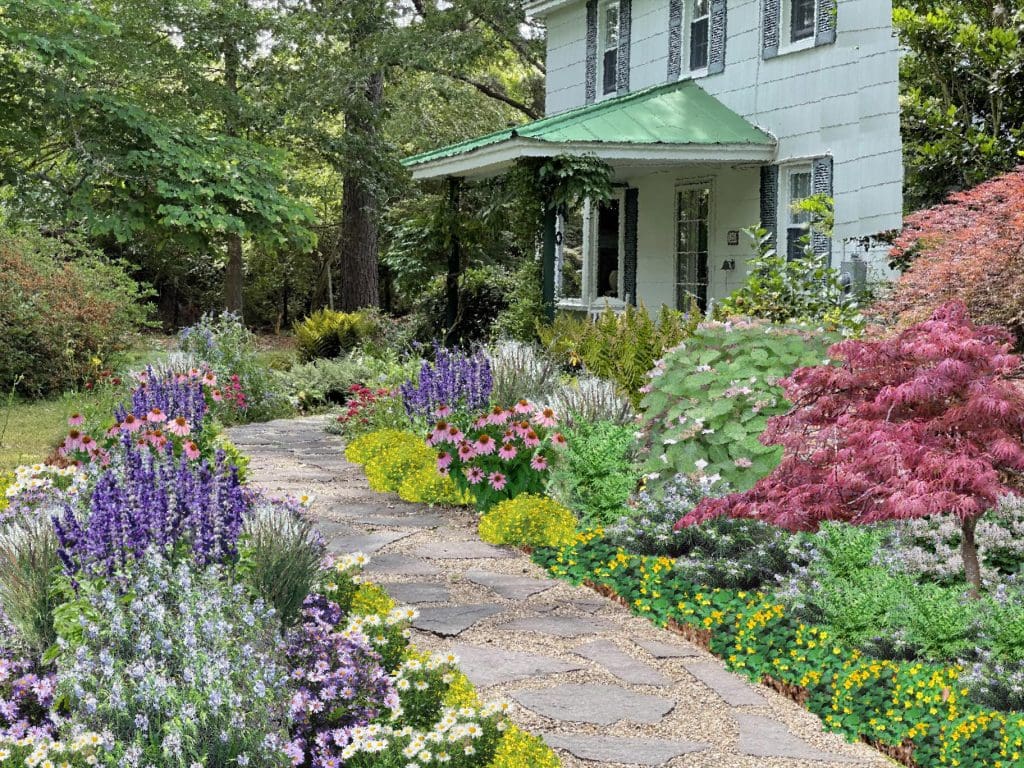Some Ideas on Hilton Head Landscapes You Need To Know
Some Ideas on Hilton Head Landscapes You Need To Know
Blog Article
Not known Factual Statements About Hilton Head Landscapes
Table of ContentsWhat Does Hilton Head Landscapes Do?More About Hilton Head Landscapes3 Easy Facts About Hilton Head Landscapes ExplainedGetting The Hilton Head Landscapes To WorkSome Ideas on Hilton Head Landscapes You Should KnowThe Best Strategy To Use For Hilton Head LandscapesGetting My Hilton Head Landscapes To WorkThe Buzz on Hilton Head Landscapes
Form compatibility is additionally a significant element of unity in designone or two noticeably different forms benefit contrast and focus, yet generally all various other types need to have some resemblances for a merged appearance. Structure describes how crude or fine the surface of the plant or hardscape material really feels and/or looks.
Instances of plants with coarse texture include philodendrons, agaves, bromeliads, hollies, hands, and hydrangeas. Hardscape with coarse texture consists of rough-cut rock, rough-finished block, and incomplete wood with knots and a raised grain. Aged or old construction material that maintains a weather-beaten surface is frequently coarse in structure. Qualities that produce fine texture consist of tiny vegetation; thin, strappy leaves (grasses) or high, slim stems; small, dense twigs and small branches; long stems (creeping plants); and tiny, delicate flowers.
The Of Hilton Head Landscapes
Most plants are average structure, in that they can not be defined as having either coarse or great texture. Medium-textured plants act as a background to link and merge the crude- and fine-textured plants.

To make an area really feel smaller sized, put the coarse structures along the outer border and the great structures closest to the audience. The detail of the coarse appearance makes the plants show up closer and makes the space feel smaller sized. The viewed texture of plants can also transform with the distance from the plant.
What Does Hilton Head Landscapes Do?
Bold colors boost the comparison and make the appearance show up coarser, while low-key colors can flatten structure. Hardscape with a crude texturesuch as really rough rocks and vibrant, large timberstends to make all plant product show up much more average textured. Designers often create a structure research study (Number 8) on paper to help choose the arrangement of plant materials.
Number 8. Appearance study. Color in plant product and hardscape includes rate of interest and variety to the landscape. Shade is the most obvious aspect in the landscape and is typically the focus of most homeowners; nonetheless, it is likewise one of the most short-term element, typically lasting just a few weeks a year for private plants.
What Does Hilton Head Landscapes Mean?
An easy summary of the shade wheel consists of the 3 primaries of red, blue, and yellow; the three secondary colors (a mix of two primaries) of green, orange, and violet; and 6 tertiary shades (a mix of one adjacent primary and secondary color), such as red-orange. Color theory explains the relationship of colors to each other and how they ought to be utilized in a structure.
Analogous (often called unified) color pattern are any three to five colors that are nearby on the shade wheel, such as red, red-orange, orange, yellow-orange, and yellow, or blue, blue-violet, and violet (landscaping hilton head sc). The colors belong to every other since they normally consist of 2 main shades mixed to create an additional and 2 tertiary colors, which means they share usual properties
They often tend to have high comparison in between them. The most usual collections are violet and yellow, red and environment-friendly, and blue and orange. Corresponding colors are frequently found naturally in flowers; a common pair is yellow and violet. Shade is located in the flowers, foliage, bark, and fruit of plants.
Hilton Head Landscapes Fundamentals Explained
Eco-friendly vegetation in all its various shades is the leading shade by quantity, but other shades record focus quicker as a result of their high comparison to the color environment-friendly. Shade is likewise discovered in structures, rocks, pavers, timber, and furnishings. Many shades in all-natural materials, such as rock and wood, are generally muted and tend to be variants of brown, tan, and pale yellow.
Shades have homes that can influence emotions, spatial perception, light quality, balance, and focus. Amazing shades tend to be soothing and should be utilized in locations for leisure and serenity.
Hilton Head Landscapes Fundamentals Explained
Awesome colors often tend to decline and are perceived as being further away, making a room feel larger. Shade can likewise be used to record interest and direct sights.
For instance, brilliant yellow, which has the highest intensity, also has a high comparison with all other shades (commonly called a "pop" of color) and need to be utilized moderately. A small quantity of extreme color has as much visual weight as a huge quantity of a much more suppressed or weaker shade.
Similar (occasionally called harmonious) color pattern are any kind of 3 to five shades that are nearby on the color wheel, such as red, red-orange, orange, yellow-orange, and yellow, or blue, blue-violet, and violet. The colors are relevant to every other due to the fact that they commonly consist of two key shades mixed to create an additional and two tertiary shades, which implies they share common homes.
More About Hilton Head Landscapes
Complementary shades are often discovered normally in blossoms; an usual set is yellow and violet. Color is found in the flowers, foliage, bark, and fruit of plants.
Eco-friendly vegetation in all its numerous tones is the leading shade by quantity, however other colors catch interest more readily due to the fact that of their high contrast to the shade green - Landscapers near me - https://www.provenexpert.com/steven-gonzales/?mode=preview. Shade is likewise located in buildings, rocks, pavers, wood, and furnishings. Many shades in natural products, such as stone and wood, are generally low-key and tend to be variants of brownish, tan, and pale yellow
The smart Trick of Hilton Head Landscapes That Nobody is Discussing
Shade is a vital element for producing interest and selection in the landscape. Shades have residential or commercial properties that can impact emotions, spatial assumption, light top quality, equilibrium, and emphasis. One building of shade is described family member read the full info here to temperaturecolors show up to be cool or cozy and can influence emotions or sensations. Cool colors have a tendency to be soothing and need to be used in areas for relaxation and calmness.
The "temperature level" of shades can additionally influence the perception of range. Great shades tend to decline and are perceived as being farther away, making a room really feel bigger. Cozy shades have a tendency to advancement and are viewed as being better, making a space really feel smaller sized. Shade can likewise be used to catch attention and straight views.
For instance, bright yellow, which has the highest possible intensity, likewise has a high comparison with all various other colors (typically referred to as a "pop" of shade) and ought to be conserved. A percentage of extreme color has as much visual weight as a large quantity of a more suppressed or weaker color.
Report this page